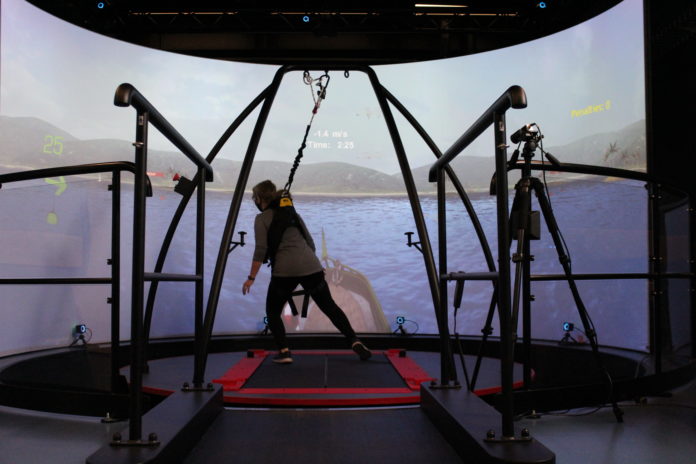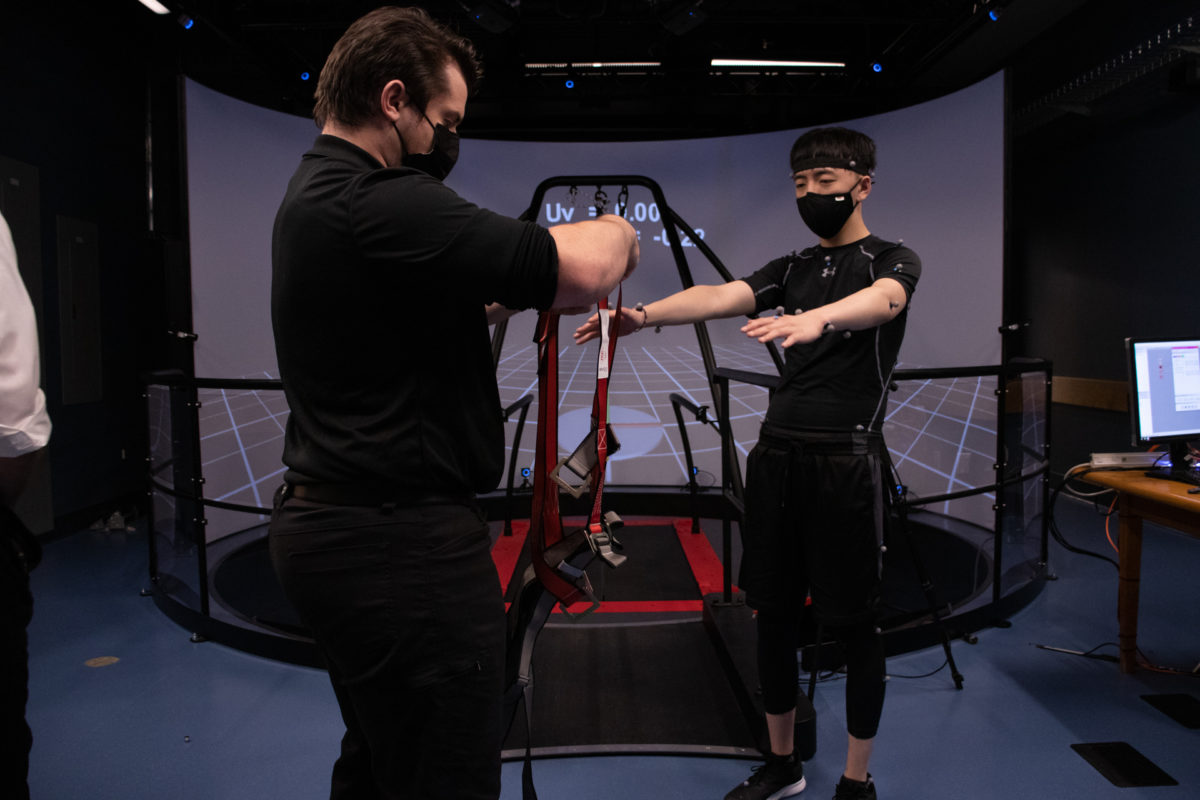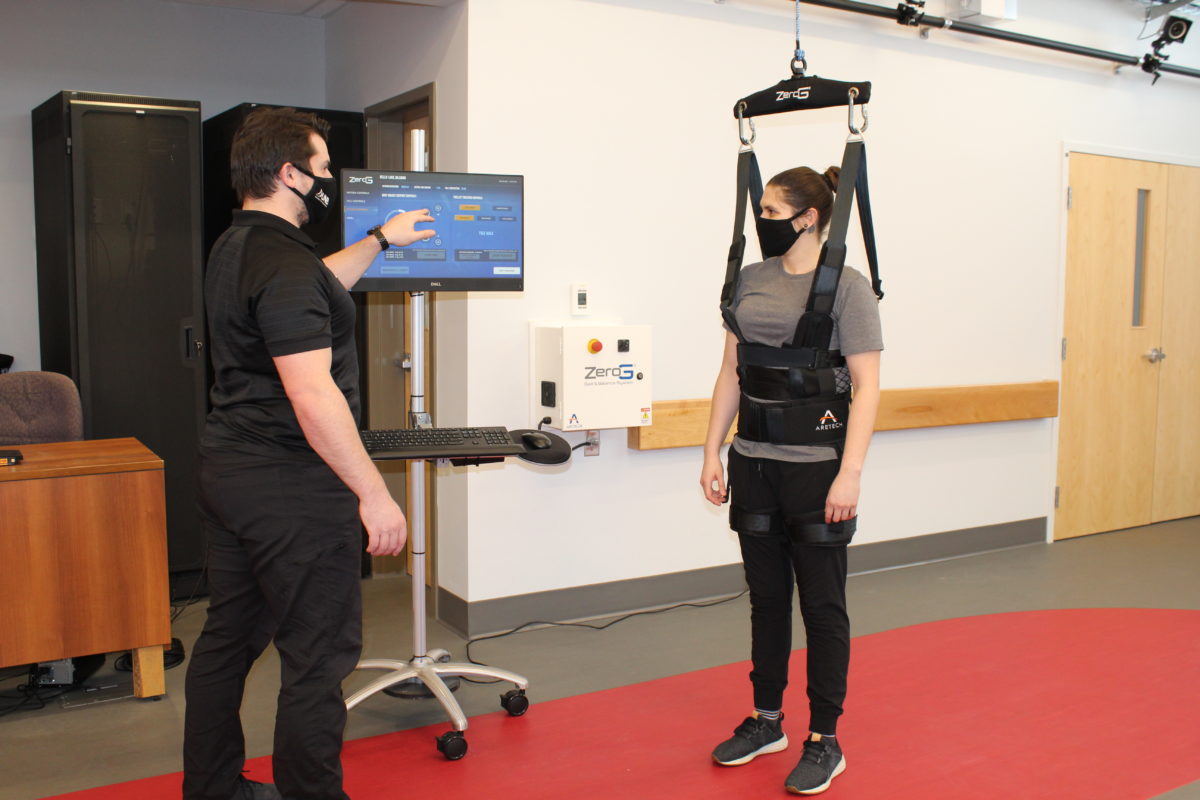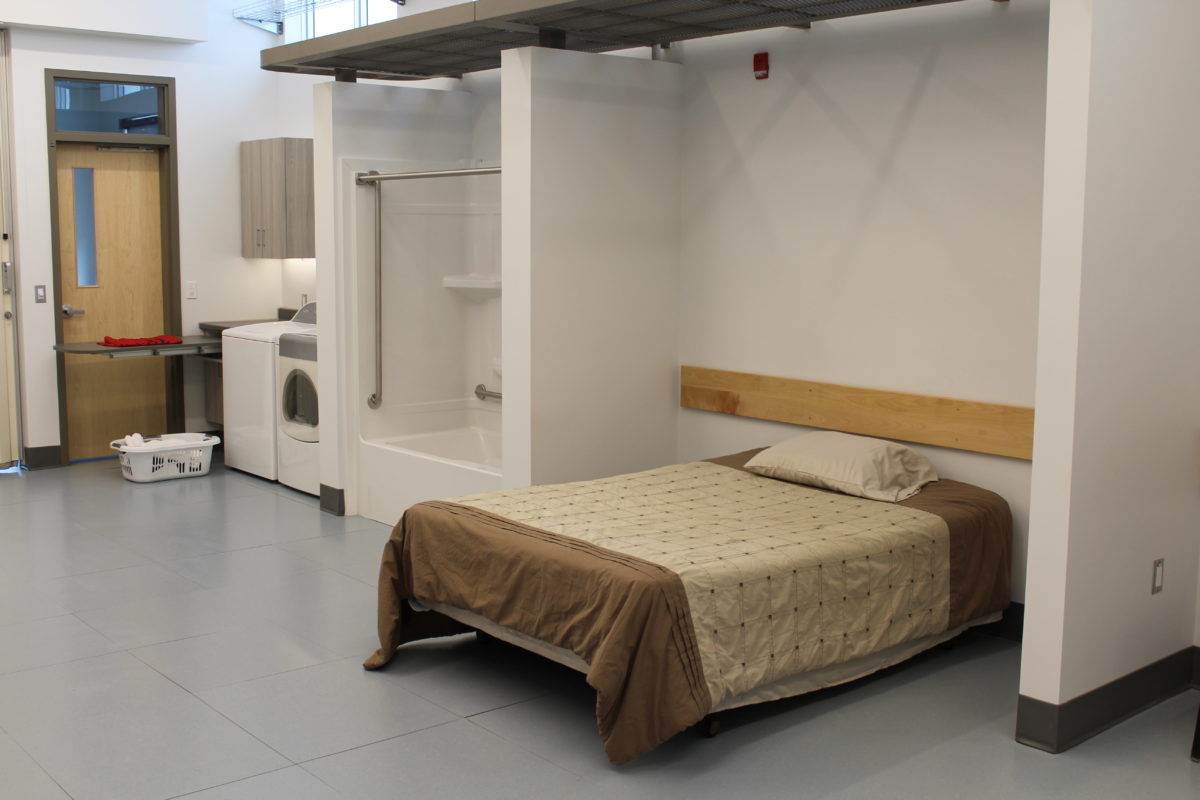
Inside the Centre for Adaptive Rehabilitative Engineering (CARE) at the University of New Brunswick, a patient walks on a platform, known as CAREN, that immerses them in a world of virtual reality while tracking their every move.
This is just one of the capabilities in the three advanced labs in UNB’s new centre, which opened on Nov. 17, 2021.
Virtual Reality Lab

Chris McGibbon, a professor of kinesiology at UNB, said the $1.5 million CAREN system can twist, turn and support a person’s weight while allowing individuals to walk continuously instead of going back and forth on parallel bars, a common rehabilitation technique.
“There tends to be this kind of [idea that] ‘well, this has worked in the past, let’s just keep doing it this way,’” he said.
But, McGibbon said rehabilitation of a spinal cord injury isn’t just related to rehabilitating leg movement. This theory says the brain signal that controls the leg muscles has been interrupted. Normally, the vestibular system constantly takes in information regarding walking, planning and responding.
When rehabilitation only focuses on the legs, the central nervous system isn’t relearning everything that it needs to move properly outside of the rehabilitation centre. This is where the CAREN system comes in – to involve the leg movement as well as the vestibular system.
Rafeh Jaber, a master’s student in electrical engineering, is conducting a research study on walking canes and is using two of the centre’s labs to collect data. In the Virtual Reality Lab, Jaber uses the CAREN system. Picking up on older research, the cane has sensors that measure the pressure the individual puts on the cane.
Jaber’s research focuses on gait segmentation, which refers to the unique walking patterns of humans. The cane would monitor trends, improvements, walking attributes, pressure and number of steps. The CAREN system helps simulate different scenarios like walking uphill, downhill or moving through different terrain like a forest.
When Jaber was given the opportunity to work on this project in the summer, he was excited.
“It’s [a] one of a kind opportunity for me. And until this day, whenever I am collecting data on a daily basis, I’m still excited to work with the system and see the people get excited to use it,” he said. “It’s just really, really amazing to see this big machine just follow my controls to the slightest millimetre.”
Mobility Lab

Jaber is also using the Mobility Lab, which imitates regular walking on solid ground.
McGibbon said this lab is unique because it has a track for people to walk around continuously. But, because a lot of the subjects may have balance issues, having them walk around a track could increase their risk of falling.
The lab is equipped with an overhead body weight support system called the Zero-G dynamic harness, which monitors the tension on the lanyard attached to the individual. It follows the person around the track without them needing to pull the tether. If the person trips and falls, the harness prevents them from hitting the ground.
The system can also eliminate the body weight of the user. For people with lower extremity injuries who haven’t regained full function, the Zero-G alleviates some body weight and the person can slowly recondition themselves to support all of their weight while walking.
“In their first couple weeks of rehab, maybe they should only be supporting 50 per cent of their body weight … maybe in a week or two, they’re doing fine at 50 per cent body weight, then you reduce it to 30 per cent,” said McGibbon.
“And then you reduce it to 20 and then 10 and so on. Now, their muscles are reconditioned and they’re able to ambulate on their own.”
Activity of Daily Living Lab

The third lab, the Activity of Daily Living Lab, allows for the assessment of rehabilitation in everyday environments.
Jon Sensinger, the director of the Institute of Biomedical Engineering at UNB, said the lab is equipped with a working sink, stove, dishwasher, bed, shower and laundry units. It helps people in rehabilitation to transition back to home life.
“I’m an engineer and so I always focus on ‘what technology can we use to make someone better?’” said Sensinger. “But, there’s an equally valid way to look at life and that is, ‘how can we accommodate the environment to make life better?’”
Sensinger said the Activity of Daily Living Lab looks at changing the individual’s environment to create an easier way of living.
“We don’t just have to rehabilitate the person, we can also change their environment, and finding that intersection may be the most efficient way to help them out in life,” said Sensinger.
The CARE was funded by $2.28 million from New Brunswick’s Regional Development Corporation; $2.27 million from the Canadian Foundation for Innovation; $400,000 from Bob and Barbara Pickett, the namesakes of the Pickett Wing where the CARE is housed; $105,000 from the New Brunswick Innovation Foundation; and $50,000 from the New Brunswick Health Research Foundation.
Sensinger said organizing the opening ceremony for the CARE was more difficult because of COVID-19. The ceremony was supposed to be held in June 2020, but the pandemic delayed the ceremony and plans to finish the building until November 2021. Sensinger said he could feel the excitement from the staff at an Institute for Biomedical Engineering meeting around the time of CARE’s opening.
“I have strong hope that this will change how we view rehabilitation here in New Brunswick, across Canada and internationally.”
